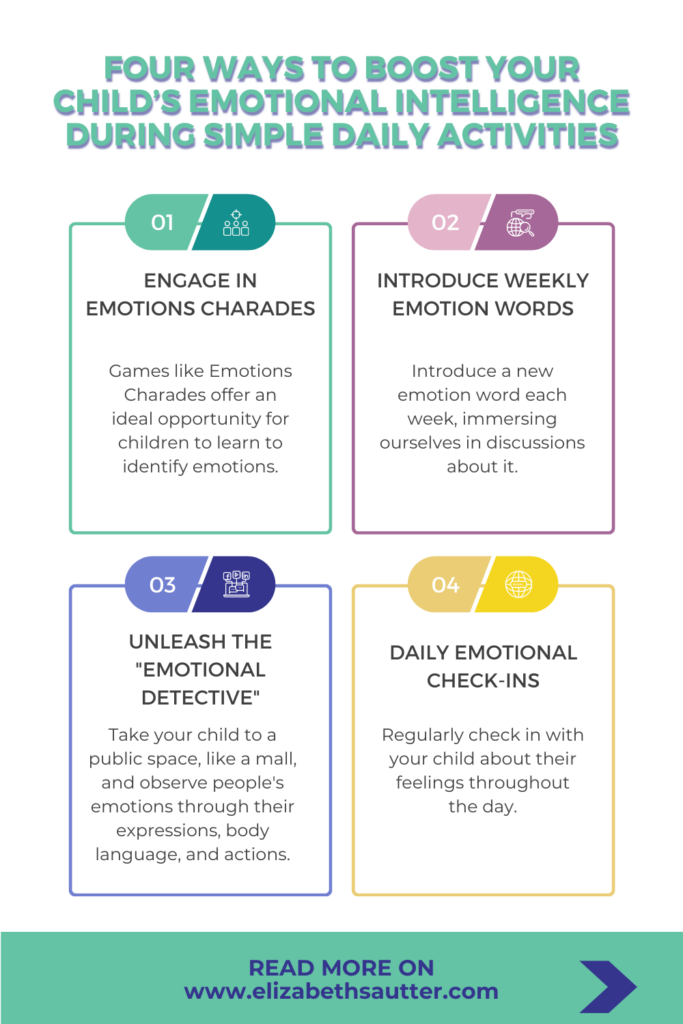Emotional intelligence plays a pivotal role in a child’s development, affecting their ability to understand and manage emotions effectively. Particularly challenging for younger kids, emotional intelligence is a skill that, much like other developmental milestones, requires nurturing over time. Discover how you can boost your child’s emotional intelligence through simple daily activities that encourage social-emotional learning.
What is Emotional Intelligence (EQ)?
Emotional intelligence encompasses the awareness and identification of emotions within oneself and others. It also involves the capacity to manage these emotions and problem-solve in various situations. As Dr. Daniel Goleman asserts, emotional competencies are acquired skills that, with effort, can lead to remarkable performance.
In today’s educational landscape, emotional intelligence is considered more valuable than IQ, essential for success not only during school years but also in adulthood.
Tip #1: Engage in Emotions Charades
Games like Emotions Charades offer an ideal opportunity for children to learn to identify emotions. Through role-play and guessing, kids can develop vocabulary and insight into emotions. By practicing in a structured yet enjoyable way, they become better equipped to identify and manage emotions in real-life scenarios.
Tip #2: Introduce Weekly Emotion Words
Tip #3: Unleash the “Emotional Detective”
Take your child to a public space, like a mall, and observe people’s emotions through their expressions, body language, and actions. Encourage conversations about why individuals might be feeling certain emotions. This activity cultivates empathy and improves their ability to perceive and understand emotions in others.
Tip #4: Daily Emotional Check-Ins
Regularly check in with your child about their feelings throughout the day. Utilize visual aids featuring different facial expressions to facilitate discussions. Share your own emotions and the reasons behind them. For children struggling to verbalize emotions, provide options like drawing or writing to express themselves.

Explore “Make Social and Emotional Learning Stick”
Ready to take your child’s emotional intelligence journey to the next level? Dive into “Make Social and Emotional Learning Stick: Practical Activities to Manage Emotions, Navigate Social Situations, and Reduce Anxiety.” This comprehensive guidebook is filled with engaging activities designed to empower your child with essential life skills. I have provided simple ways to infuse social-emotional learning into your everyday routines and activities so it doesn’t feel overwhelming.
For even more resources on social-emotional learning and emotional intelligence, explore our collection of books, training programs, resources, and support services. At elizabethsautter.com,, we are dedicated to fostering emotional growth in children for lifelong success.

